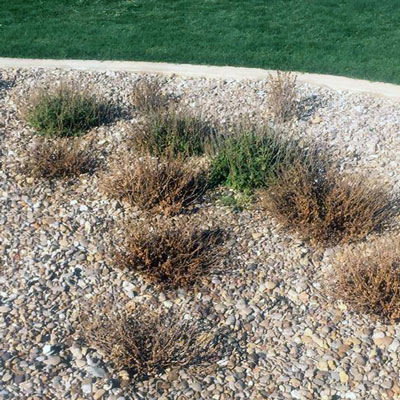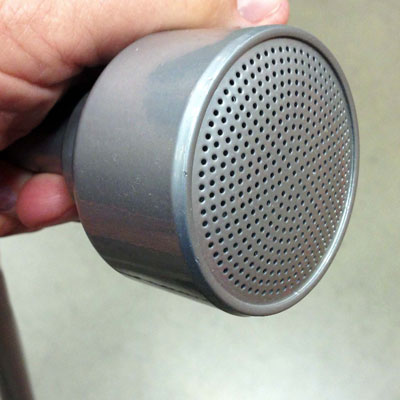Question of the Week Number 1: June 28, 2018
“Neil, what is wrong with my new plants? They were doing great until just a week or so ago.”

This landscape photo was posted recently to my Facebook page. In addition to what you’re about to read below, I also cautioned the FB friend that white mulch reflects sunlight to the bottom sides of plants’ leaves. Those tissues are not accustomed to that reflective light and heat, adding to their problems.
These plants have gotten too dry. It may only have been once, or it could have been repeatedly. I get the question with a variety of plants being involved, but usually it’s accompanied with, “I’m sure I’ve watered enough.” When I start asking questions back, that’s when I find out that they’ve either been using a drip irrigation line or they’ve been running a sprinkler over the entire landscape.
Note: I know this question came up here a couple of weeks ago, but I get it so often that I wanted to repeat it in the hopes I could save new plants in your plantings. It’s a message that merits repeating. Who knows – maybe there are some new facts herein.
Let me explain a critical detail. Nursery stock is grown in very lightweight potting soil. That makes it easier to handle the containers, and it also cuts down dramatically on shipping expenses.
However, when those plants are set out into the landscape, their root balls dry out in just a day or two at Texas summertime temperatures. Meanwhile, the established landscape plants around them are lush and vigorous.
When mulch is spread over the new planting it makes it all the more difficult to tell when the soil balls of the new shrubs and trees have started to dry. Don’t get me wrong: the mulch is a good idea. You just need to remember to poke your finger through it to check the drying rate of the plants’ soil.

Water breaker allows you to turn the hose up to full volume for quicker watering without washing the soil.
The only solution as far as I’m concerned? Water new plants by hand. Use a long-handled watering wand with either a water breaker or bubbler to break up the flow of the water, and soak the soil deeply every couple of days. Do that for their first year or two in your landscape. By then they’ll have roots out into the surrounding soil and they’ll begin to behave like your other more established plants.
